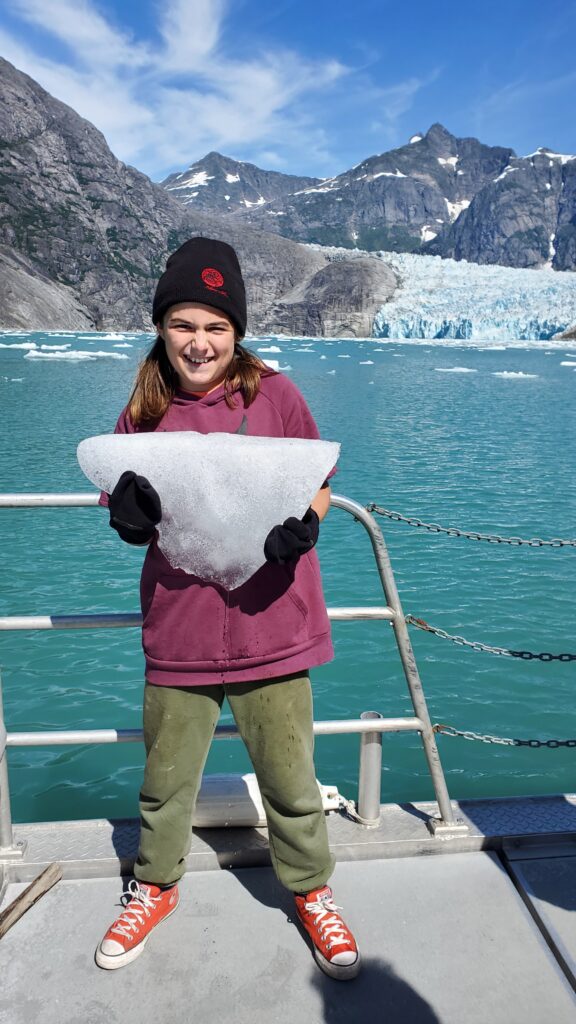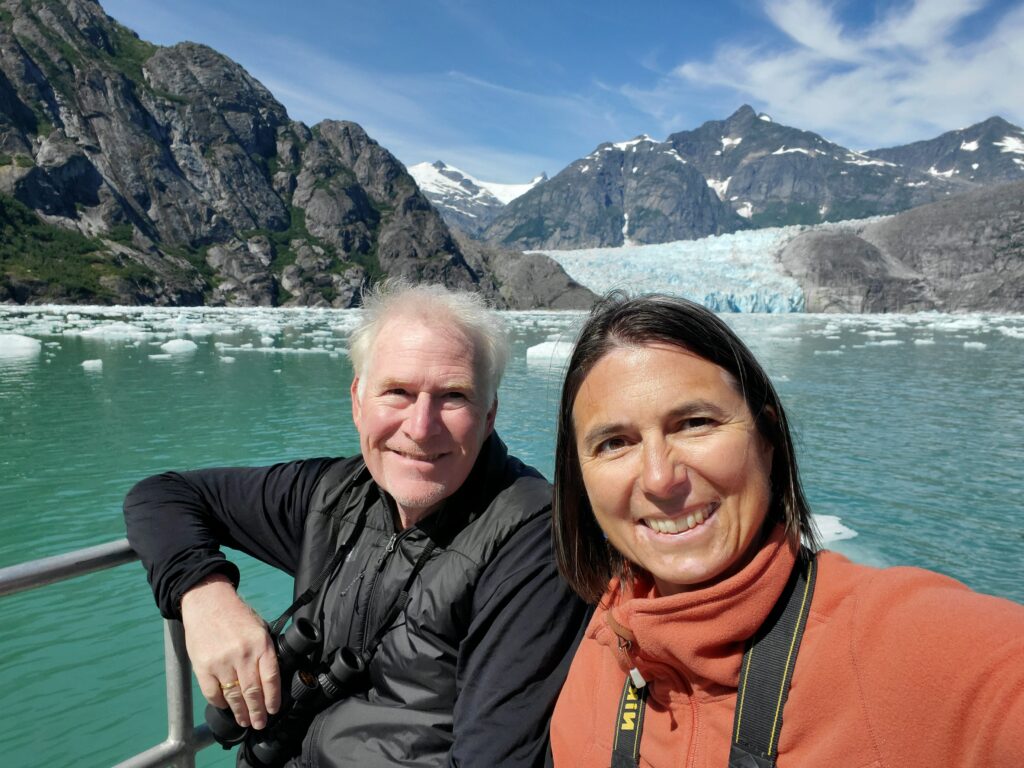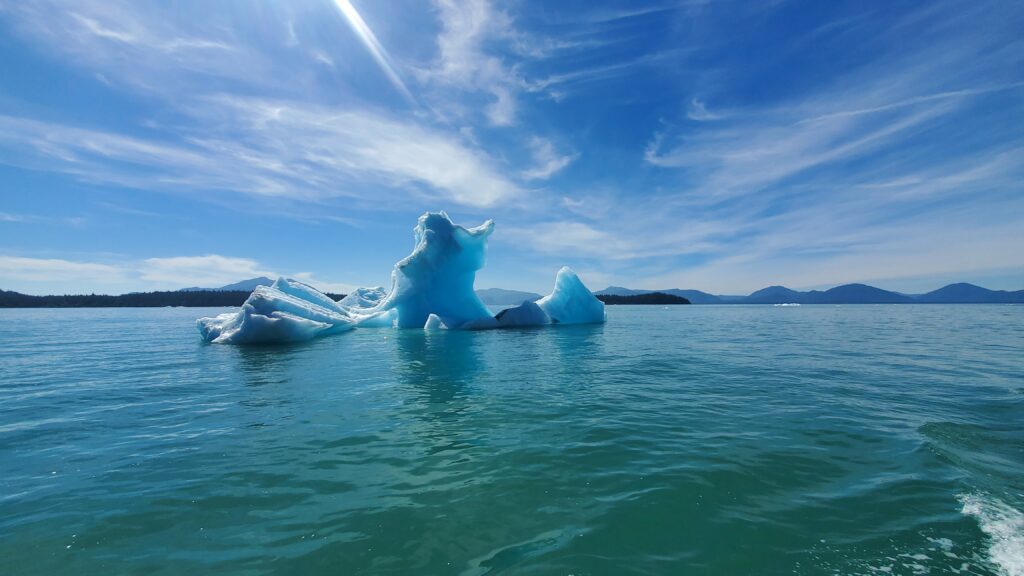Petersburg, Alaska – Our trip to LeConte Glacier was so fantastic, I get choked up just thinking about it. Our planet is so amazing…
LeConte Glacier is a tidewater glacier near Petersburg, Alaska. That just means it’s an ice sheet that flows into the ocean (as you can see). Tidewater glaciers “calve” as they move forward, and large chunks break off and fall into the ocean. Unfortunately, I did not catch this on video, but we were awestruck by this dramatic (and loud!) display by Mother Nature, as giant blocks of ice break off the glacier and crash into the water.
I did manage to record some of the spectacular formations by resulting icebergs.

S caught an iceberg! We really really really wanted to bring it home for a souvenir, but we couldn’t figure out the logistics. Instead, we left it in the cooler on the boat so future travelers will enjoy iceberg-cooled drinks.
Tidewater glaciers are naturally dynamic, as they advance and retreat in response to changes in local conditions. So calving is not necessarily a foreboding phenomenon. However, studies show that the ice sheets that feed glaciers in Alaska are thinning as a result of climate change, and many tidewater glaciers are retreating. LeConte has retreated 2.5 miles (!) since it was discovered in the late 19th century. In fact, our guide Zach from Muddy Water Adventures attested that he could see the difference in LeConte Glacier in his own short 35-year lifetime.
The icebergs that result from calving are also an important habitat for harbor seals. Normally, the seals spend most of their time in the water, but they need to rest while nursing and raising their pups (also while molting). Just look at these guys!

I repeat, our planet is so, so amazing…



